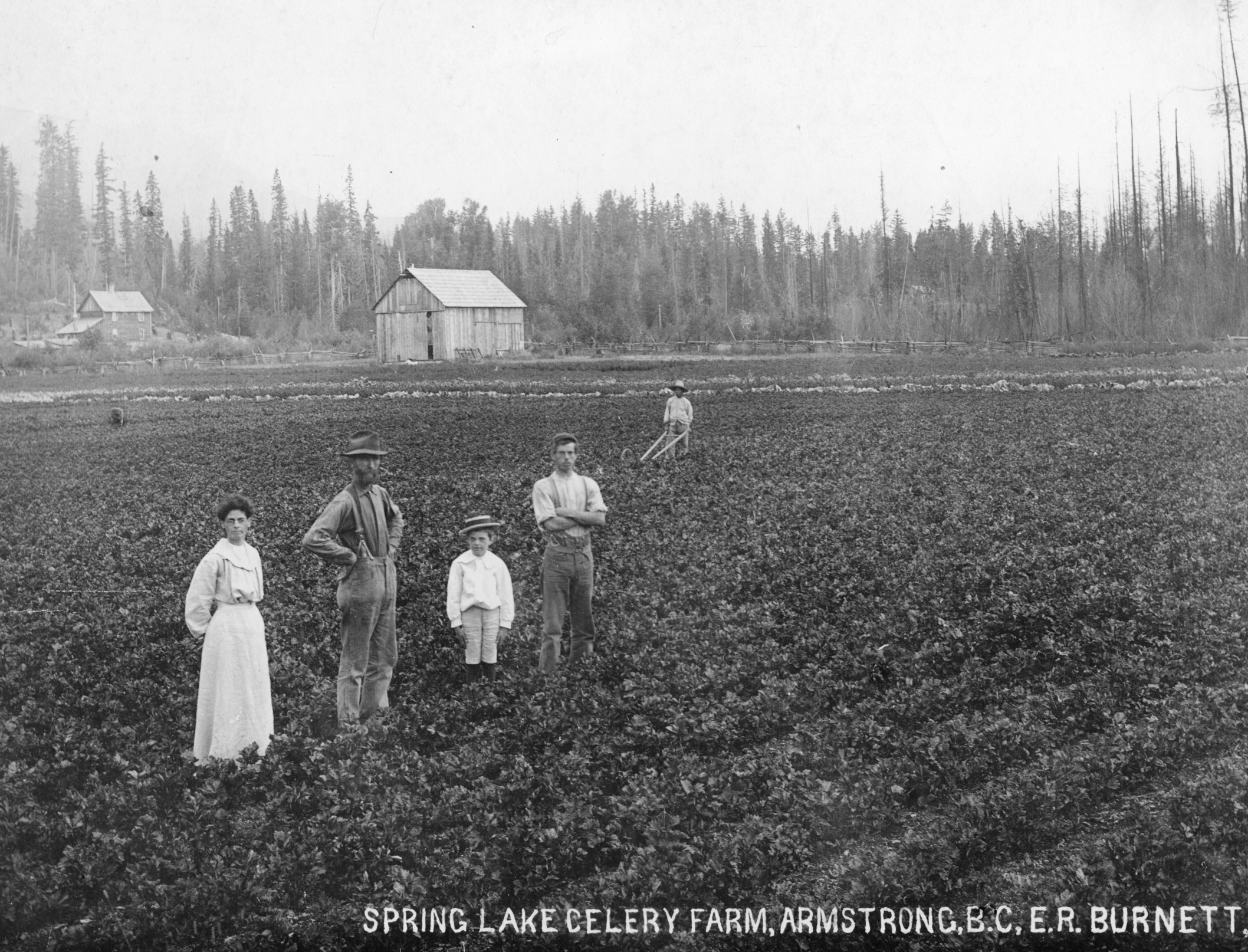In the dark days of December, it’s easy to forget the Okanagan’s warm spring and summer months and the abundance they bring. Some crops, however, are especially prone to slipping from memory—those lesser-known products that once played a significant role in the region’s agricultural history.
Between 1893 and 1905, the expansion of the Shuswap & Okanagan Railway allowed Vernon farmers to ship produce beyond the Valley. Among the exports were white, red, and black currants, a prized commodity in the early days of fruit production. While many gardeners continue to grow currants on a small scale, they were once a cornerstone of Vernon’s agricultural industry.

Celery was another surprising crop from the Okanagan’s past. Armstrong earned the nickname “Celery City” after E.R. Burnett brought seeds from his hometown of Kalamazoo, Michigan, in 1900 and began growing them on his farm. By 1905, the farm was producing impressive yields. In the years that followed, Chinese farmers played a central role in cultivating the celery industry. However, the industry began to decline around the First World War as farmers turned their attention to another unexpected crop.
During the wartime and Depression eras, potatoes became a key crop in the Okanagan due to their suitability for dehydration, which made them an ideal food source for long-term storage and transportation. The region’s connection to potato farming began even earlier, in 1893, when Lord and Lady Aberdeen successfully grew potatoes on their Kelowna property, Guisachan, alongside clover and timothy hay.

Tomatoes also played a major role in the Okanagan’s history, once making up the largest share of vegetables processed by local canneries like Bulmans in Vernon. The smell of tomatoes being processed was a hallmark of Okanagan cities during the fall. However, production began to decline in the 1950s and 1960s due to crop disease and changing agricultural trends.
One such trend was the introduction of ginseng. Horticulturist Al Oliver brought new techniques from Asia to the Okanagan, helping the region establish a thriving ginseng industry by the 1980s. The crop grew from obscurity to become a highly profitable export, attracting significant investment. However, by 2010, ginseng production had all but disappeared.

These crops tell a story of how the Okanagan’s agricultural landscape has evolved over time, shaped by changing markets and farming practices. While some, like currants and potatoes, have endured on a small scale, others, like celery, tomatoes, and ginseng, reflect unique chapters in its history. Together, they highlight the diversity and adaptability of Okanagan’s farmers.
Archives Manager, Gwyneth Evans

